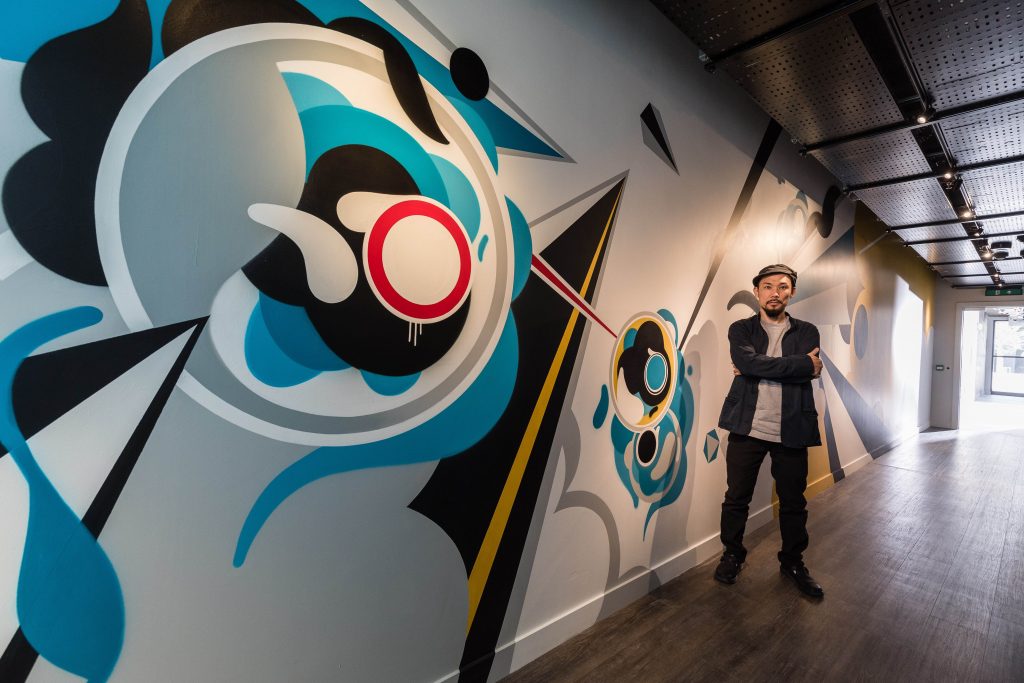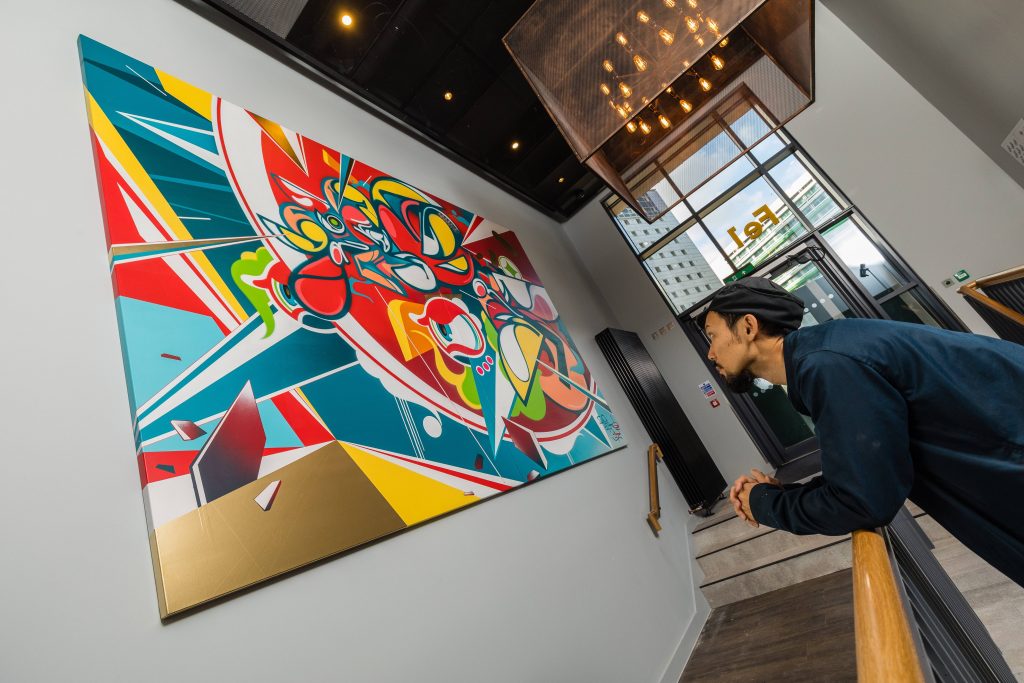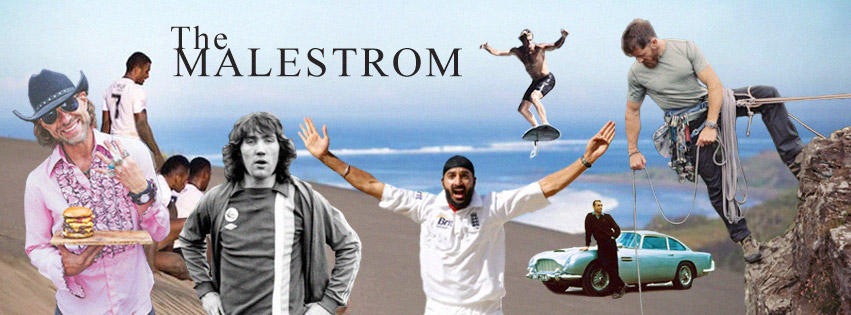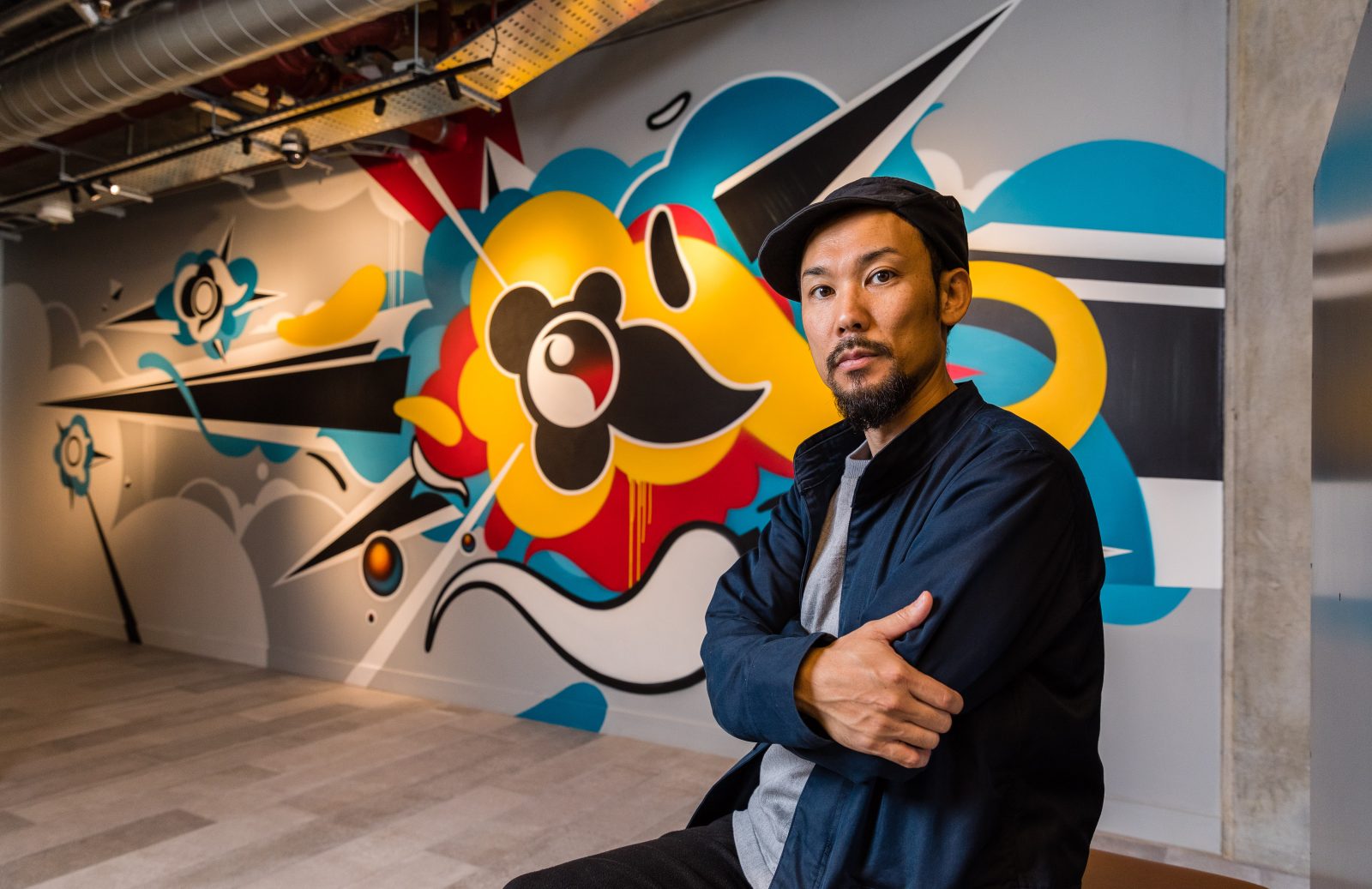Japanese graffiti artist Suiko has been wowing anyone passing by his incredible work for 20 years. Having become interested in the art form at the age of 16, Suiko has developed into one of his country’s best-known graffiti writers, with a unique style fusing European flavoured graffiti and traditional Japanese art and writing forms. Although primarily working out of his hometown of Hiroshima, Suiko has travelled the world working on numerous impressive projects, with his murals gracing walls and buildings far and wide from Paris to São Paulo.
Most recently he’s just undertaken his first residential commission in the New York-esque Ferrum building within Tipi’s new apartments at Wembley Park. We caught up with Suiko to speak to him about this new project, his vibrant, colour filled writing style, favourite global scenes and tips for anyone interested in taking up the art.
The MALESTROM: Tell us about how you got into graffiti?
Suiko: I discovered graffiti through skateboarding when I was about 16 years old in Japan. I was fascinated by its potential as an expressive art form. To me, graffiti means freedom. My style is inspired by a love of calligraphy and by my home, Hiroshima.
It is known in Japan as the City of Seven Rivers, with waterways flowing through the city on their journey down from the mountains to the sea. Hiroshima has the perfect balance in terms of vibrations of humidity, colour… everything really. It’s a real influence for my style of graffiti.

TM: Tell us about how your style formed?
S: I try to keep my style evolving all the time. My original work focused on curved lines using the trunk of my body, then I was gradually drawn towards straight lines and the drafting element has increased in my art. I am now working on larger murals which exceed the capacity of my own body to deliver the shapes.
My style is a combination of dynamic and fluid lines with my name tag [酔狂] inside of it. I deconstructed the letters 酔狂 and spontaneously put the parts together to create one form. My name, Suiko [酔狂] means “ Fool on the planet “ by Kanji alphabet. I want to be a freak – unique and free.

TM: What’s your creative process?
S: When I’m creating an art piece, I consider the scenery and the space where that wall exists. I think it’s the most important aspect when I design so I study each location a lot.
I consider what kind of people come and go and what kind of air is flowing? What would people feel of my art, what relationship would they have with my art in their daily life etc.? Then my imagination is stimulated then I get inspiration.
TM: Who or what inspires you?
S: A range of things – a word from my friend, natural phenomenon, sounds, museums and books.
TM: Has your work changed over the years?
S: In recent years, I have had tremendous changes in my expression. This is due to a change in my view of life.
TM: Any memorable experiences from the pieces you’ve done?
S: In 2018, I painted the entire Okayama Astronomy Museum. I always fascinated by the truth of the universe and it has always been a big theme of my life. Because of this project, I spend lots of time thinking about the universe, about life – Where we come from and where we return to? Time to think about it became a ‘turning point ’ for myself. I’ve been thinking about the universe so much that I have a spacey mind!

TM: What’s been your most ambitious project?
S: In 2003, I made a 5M high and 40M wide piece. It was my first large size mural outside. I had to begin by cleaning that wall because it was so dusty and I only had a ladder to reach the top. It was tough.
TM: Do you listen to music when you paint?
S: Yes, I always do. I like listening to music that expands my imagination and I listen all kinds of music, especially that which is slow.
TM: Tell us about your favourite graf scenes? What’s the scene like in Japan/Hiroshima?
S: I was particularly influenced by the German graffiti scene around 2000. They were changing old school graffiti to a new one, it was sensational! German Graffiti artist SEAK, SATONE and DYSET inspired me a lot.
Although Japan is very slow in embracing graffiti, there are so many styles of unique artists there. Hiroshima is the coolest city, there are the regal walls which are very very rare in Japan!
TM: What tips do you have for any kids looking to get into graffiti?
S: Graffiti has a very strong appeal and dependence. You have got to immerse yourself in the graffiti world first as this is a world that cannot be seen until you have fallen under it. Then, when you warm up, well, you want to keep the heat but go out into the street and express yourself.
TM: Tell us about this commission for Tipi…
S: I spent three months in with Tipi at Wembley Park and it was fantastic. This was my first residential project and it was really exciting to have the opportunity to reach over 1,000 Tipi residents with my art as part of their daily lives I really enjoyed working on my artwork in Tipi’s very sophisticated space. I was able to do good work there, in particular, the large canvas piece I did for the side entrance of Ferrum – this will be one of my masterpieces.
My painting was dictated by the space and the background and how it felt to me. I don’t preach with my art – it’s there to make people think. It’s natural for people to respond to it in different ways and I like that freedom of perception. I think it fits well with the Ferrum vibe.
TM: What direction do you see your work going in?
S: I have been doing graffiti for the last 20 years. I reckon that there have been 20 years of drawing ‘graffiti for graffiti’, but now I am aiming to create works that focus on what I feel with the spirit and methodology gained from graffiti.
Video by: Naoto Sakamoto. Clothing by Senelier.
Tipi, in Wembley Park is the all-inclusive professional rental service, offering brand new studio, one, two and three-bedroom apartments, with rents inclusive of all utility bills and superfast broadband.
For more info on Tipi visit: https://www.tipi.london/welcome
Click the banner to share on Facebook



